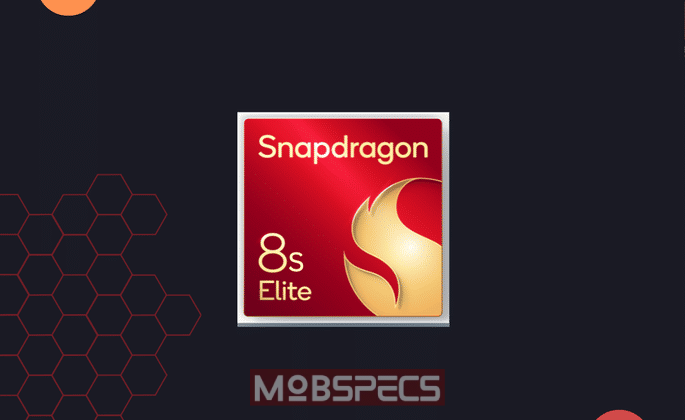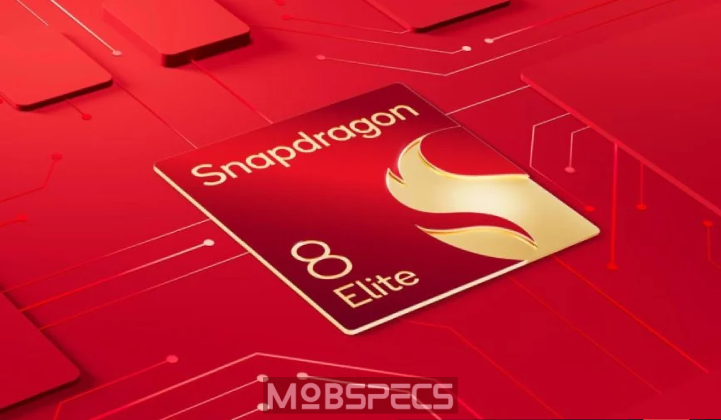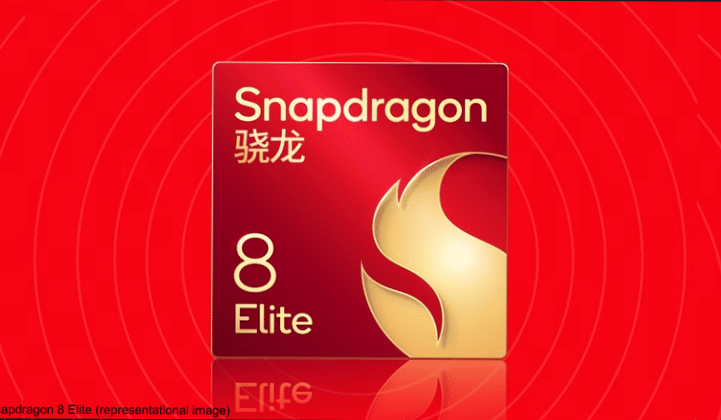
Qualcomm’s Snapdragon 8 Elite chipset, which officially debuted in October, has been making waves with its octa-core CPU. However, a recent revelation has added an intriguing twist to the story. While the Snapdragon 8 Elite we’ve come to know features eight CPU cores, a new variant has surfaced—and it’s notably different. This alternative version, which was just listed on Qualcomm’s official website, features only seven CPU cores instead of the usual eight. This unexpected development raises questions about its potential applications, target audience, and overall impact on the chipset’s market position.
Snapdragon 8 Elite: The Hepta-Core Variant
The newly revealed Snapdragon 8 Elite variant retains the same architecture but is equipped with just seven CPU cores. Specifically, it comprises two Prime cores clocked at up to 4.32 GHz and five Performance cores clocked at up to 3.53 GHz. This configuration is a departure from the regular octa-core Snapdragon 8 Elite, which features an additional Performance core. The missing core subtly alters the dynamics of the chipset’s performance capabilities, though the exact real-world implications remain to be seen.
This new variant, identified with the part number SM8750-3-AB, is designed to cater to specific needs within the market. By offering a slightly pared-down version, Qualcomm provides original equipment manufacturers (OEMs) with an option that could potentially save costs. The hepta-core design is likely a result of binning, a common practice in semiconductor manufacturing. In this process, chips that don’t meet the performance criteria for all cores are repurposed by disabling the problematic cores, creating a slightly less powerful but still functional product.
Implications of the Hepta-Core Snapdragon 8 Elite
The introduction of this variant raises several intriguing possibilities. For one, OEMs could leverage this version to develop devices that strike a balance between performance and affordability. By incorporating the hepta-core Snapdragon 8 Elite, manufacturers could position their products as premium options without incurring the higher costs associated with the full-fledged octa-core variant.
However, the market reception to this model remains uncertain. While some consumers may not notice the difference in core count, others might perceive the hepta-core version as a lesser or inferior option. This perception could influence purchasing decisions, especially among tech-savvy users who pay close attention to specifications.
Furthermore, the hepta-core variant’s performance in real-world scenarios will be a critical factor. If it can deliver comparable efficiency and power to its octa-core counterpart in everyday tasks and gaming, it may find a niche audience. On the other hand, if the reduced core count leads to noticeable performance drawbacks, it could struggle to gain traction.
The Snapdragon 8 Elite’s Successor: A Preview
While the current Snapdragon 8 Elite continues to evolve with the addition of this new variant, Qualcomm is already hard at work on its successor. Rumors suggest that the next-generation Snapdragon 8 Elite chipset is well into development and might launch earlier than expected. If these reports are accurate, we could see the new chipset debut as early as the middle of the year, marking a shift from Qualcomm’s typical release schedule.
The source of these rumors is Digital Chat Station, a well-known leaker on the Chinese social media platform Weibo. However, as with any unofficial information, it’s essential to approach these claims with caution, especially given the potential for misinterpretation or translation errors.
What to Expect from the Next Snapdragon 8 Elite
The upcoming Snapdragon 8 Elite chipset is rumored to bring significant improvements, particularly in GPU performance. This enhancement could make the chipset a powerhouse for mobile gaming and other graphics-intensive applications, solidifying Qualcomm’s position as a leader in the high-performance chipset market.
Additionally, the new chipset will reportedly be built on TSMC’s cutting-edge 3nm process. This advanced manufacturing technology promises greater energy efficiency and improved performance, potentially giving the next Snapdragon 8 Elite a competitive edge over its predecessors and rival chipsets.
The shift to the 3nm process is a significant milestone for Qualcomm, as it reflects the company’s commitment to pushing the boundaries of mobile technology. By leveraging the latest advancements in semiconductor manufacturing, Qualcomm aims to deliver a chipset that meets the growing demands of consumers and OEMs alike.

Contextualizing the Snapdragon 8 Elite’s Evolution
The Snapdragon 8 Elite’s journey—from its initial launch to the introduction of a hepta-core variant and the anticipation of its successor—underscores Qualcomm’s adaptability and innovation. In a competitive landscape where performance and efficiency are paramount, the company continues to explore new ways to meet diverse market needs.
The decision to release a seven-core version of the Snapdragon 8 Elite highlights Qualcomm’s pragmatic approach to product development. By repurposing chips that don’t fully meet the criteria for the octa-core version, the company maximizes resource utilization while offering OEMs a cost-effective alternative. This strategy not only reduces waste but also broadens the chipset’s appeal, potentially attracting a wider range of manufacturers and consumers.
At the same time, the development of the next-generation Snapdragon 8 Elite showcases Qualcomm’s forward-thinking mindset. By prioritizing GPU enhancements and adopting the 3nm process, the company is positioning itself to address the evolving demands of mobile users. Whether it’s for gaming, streaming, or multitasking, the next Snapdragon 8 Elite is poised to deliver a premium experience that meets the expectations of even the most discerning consumers.
Market Dynamics and Consumer Perception
The introduction of the hepta-core Snapdragon 8 Elite variant and the anticipation of its successor come at a time of rapid change in the mobile chipset market. With competitors like MediaTek and Samsung continuously innovating, Qualcomm must strike a delicate balance between performance, efficiency, and affordability.
For the hepta-core variant, its success will largely depend on how OEMs position it in their product portfolios. If marketed as a cost-effective yet powerful option, it could appeal to consumers who prioritize value for money. However, clear communication will be crucial to avoid misconceptions about its capabilities compared to the octa-core version.
As for the next Snapdragon 8 Elite, its early launch could give Qualcomm a strategic advantage. By releasing the chipset ahead of schedule, the company can secure a head start in the market, potentially influencing OEMs’ product development timelines. This move could also create a sense of anticipation among consumers, further solidifying Qualcomm’s reputation as an industry leader.
Challenges and Opportunities
While the hepta-core variant and the upcoming Snapdragon 8 Elite represent exciting developments, they also come with challenges. For the hepta-core version, the primary hurdle will be convincing both OEMs and consumers of its value. Any perceived compromise in performance could impact its adoption, particularly in a market where specifications often play a pivotal role in purchasing decisions.
For the next-generation Snapdragon 8 Elite, the challenge lies in meeting the high expectations set by its predecessors. With rumors of enhanced GPU performance and a 3nm process, the chipset has already generated considerable buzz. However, delivering on these promises will be essential to maintaining Qualcomm’s competitive edge.
At the same time, both developments present significant opportunities. The hepta-core variant could carve out a niche in the mid-to-high-end segment, offering a compelling alternative for budget-conscious consumers. Meanwhile, the next Snapdragon 8 Elite could redefine the standards for flagship chipsets, setting a new benchmark for performance and efficiency.
Snapdragon 8 Elite 2 and Dimensity 9500: Next-Gen Performance
A recent leak on Weibo suggests exciting developments for the Snapdragon 8 Elite 2 and Dimensity 9500 chipsets. Both are rumored to support ARM’s Scalable Matrix Extension (SME), an advanced instruction set designed to enhance processors’ ability to handle complex workloads efficiently. This innovation has the potential to significantly boost single-core performance, potentially closing the gap between Qualcomm, MediaTek, and Apple’s industry-leading M4 chip.
Advanced Manufacturing: TSMC’s 3nm Process
Another notable detail from the rumor mill is that both chipsets are expected to be built using TSMC’s advanced 3nm N3P manufacturing process. This cutting-edge technology is likely to enhance both performance and energy efficiency, making the new processors more powerful and less power-hungry. Interestingly, Apple’s upcoming A19 chip is also rumored to leverage the same 3nm process, positioning these chipsets to compete directly with Apple’s offerings.

Performance Clocks: Snapdragon vs. Dimensity
The Snapdragon 8 Elite 2 is speculated to feature performance cores clocked at an impressive 5.00 GHz, setting a new benchmark for Android processors. In comparison, the Dimensity 9500 is rumored to have cores reaching up to 4.00 GHz. While these figures are unconfirmed, they point toward substantial performance gains for both chipsets.
Speculation vs. Reality
Although these details are intriguing, it’s important to note that they remain speculative. The true capabilities of the Snapdragon 8 Elite 2 and Dimensity 9500 will only become clear once the chipsets are officially released and subjected to rigorous benchmarking. Even then, benchmark results don’t always paint a complete picture of real-world performance, as factors like software optimization and thermal management play significant roles.
Closing the Gap with Apple
Qualcomm and MediaTek have been steadily narrowing the performance gap with Apple over recent years. If these rumors hold true, the next-generation chipsets could bring Android processors to a level of parity with Apple’s M4 chip. For Android enthusiasts, this could translate into a wider range of high-performance smartphone options, raising the bar for the entire industry.
Conclusion
Qualcomm’s Snapdragon 8 Elite chipset continues to evolve, demonstrating the company’s commitment to innovation and adaptability. The introduction of a hepta-core variant offers OEMs and consumers a new option, while the development of the next-generation Snapdragon 8 Elite promises exciting advancements in performance and efficiency.
As these developments unfold, the mobile chipset market is poised for further transformation. Whether it’s through cost-effective alternatives or cutting-edge technologies, Qualcomm’s efforts highlight the dynamic nature of the industry and its ongoing quest to meet the ever-changing needs of users worldwide. Ultimately, the success of these initiatives will depend on their ability to deliver tangible benefits, both in terms of performance and value, to consumers and manufacturers alike.
Also Read Below:
Outstanding Qualcomm Snapdragon 7 Gen 3 AnTuTu and Geekbench Scores